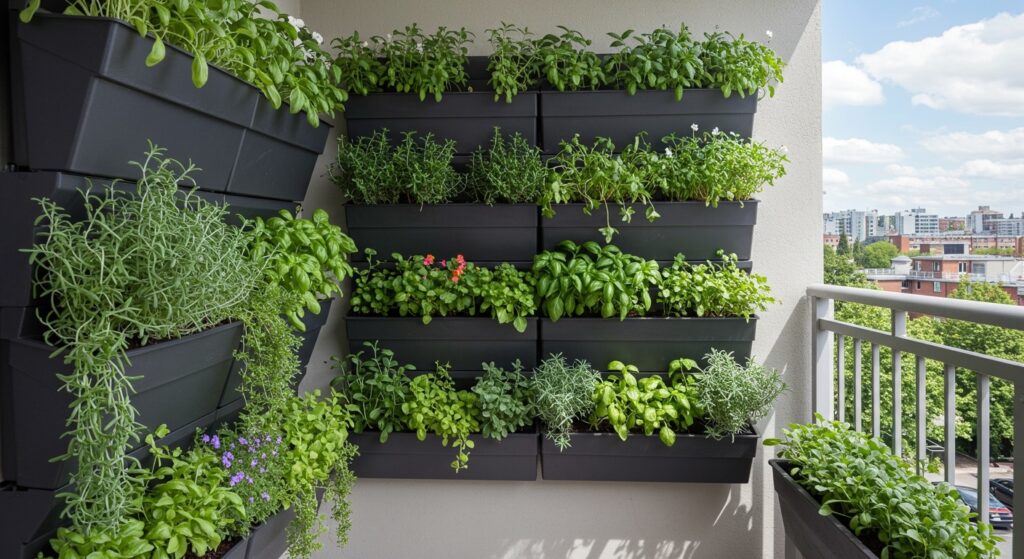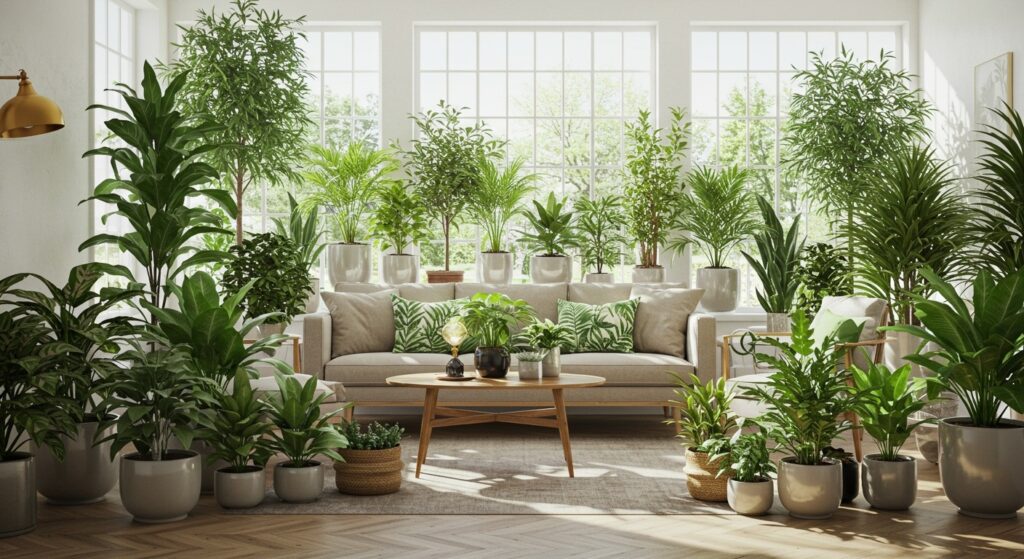Picture walking into your living room and feeling like you’ve stepped into a private botanical retreat. That’s the magic an indoor garden can bring to your space. But here’s the thing – most people think you need a greenhouse-sized room or a green thumb to pull it off.
You don’t.
The truth is, creating an indoor garden living room is more about choosing the right plants for your lifestyle and arranging them in ways that make sense for how you actually live. Maybe you travel often, or perhaps your room doesn’t get tons of sunlight. Whatever your situation, there’s a way to bring nature indoors that works for you.
In this guide, we’ll walk through practical indoor garden layouts, plant combinations that thrive together, and styling tricks that make your space feel intentionally designed rather than cluttered. Whether you’re starting from scratch or looking to elevate your current plant collection, these ideas will help you create a living room that breathes life into your everyday routine.
1. Layered Vertical Garden Walls
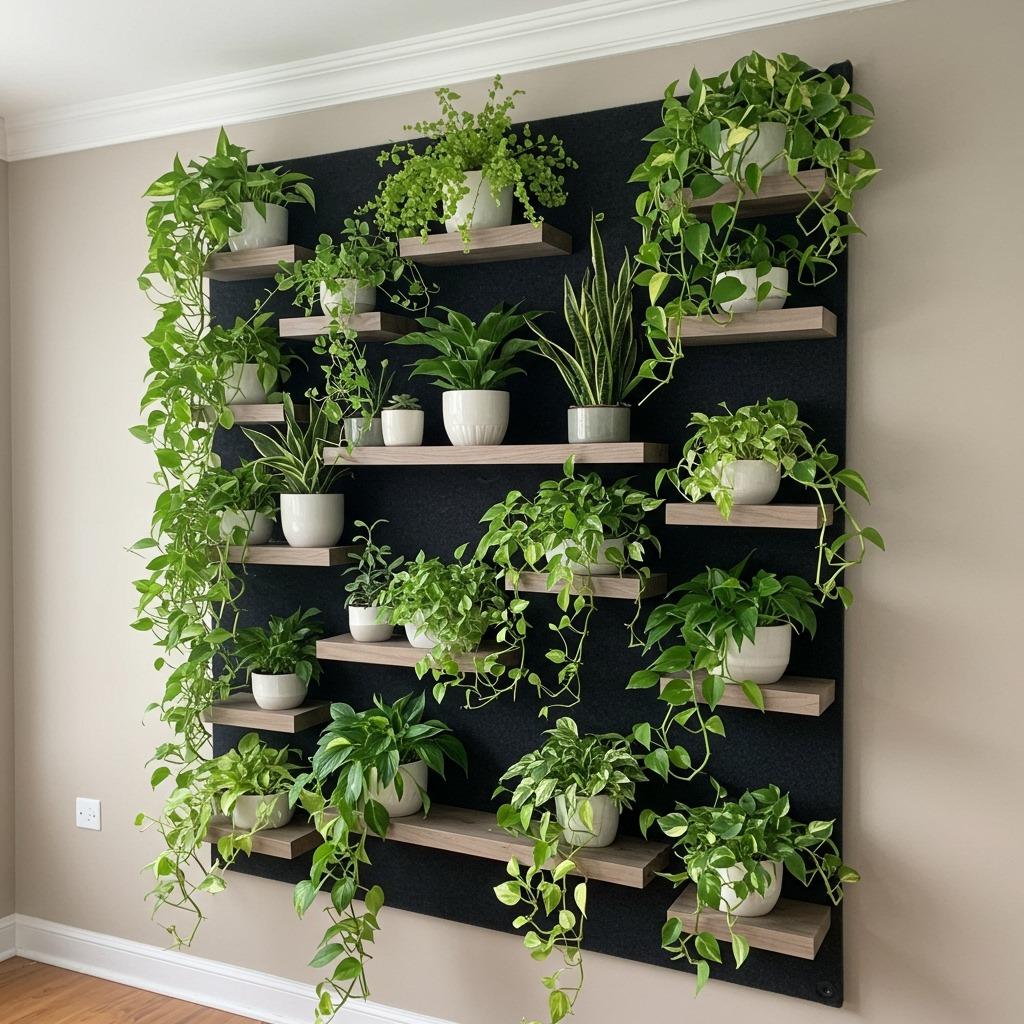
Vertical gardens solve one of the biggest challenges in smaller living rooms – limited floor space. Instead of spreading plants horizontally, you build upward using wall-mounted shelves, hanging planters, or even specialized vertical garden systems. The layered effect creates depth and makes your room feel fuller without sacrificing precious square footage.
Start with sturdy floating shelves at different heights. Place taller plants like snake plants or dracaena on lower shelves, and let trailing varieties like pothos or string of pearls cascade from higher spots. This creates natural movement and draws the eye upward, making your ceiling feel higher.
The key is varying your plant sizes and textures. Mix broad-leaved plants with delicate ferns and structured succulents. When you combine different growth patterns, the wall becomes a living art installation rather than just a plant storage solution. Plus, grouping plants together actually helps them thrive since they create their own microclimate with shared humidity.
2. Corner Jungle Clusters

Empty corners often become dead zones in living rooms. But fill them with a carefully curated plant cluster, and suddenly you’ve got a conversation piece. The trick is thinking in layers – one tall statement plant, a few mid-height companions, and ground-cover plants that fill the base.
A fiddle leaf fig or bird of paradise makes an excellent anchor for your corner jungle. These plants command attention without needing much width. Surround them with plants like monstera or philodendron that have interesting leaf shapes. At the base, try calathea or peperomia varieties that appreciate the filtered light created by taller neighbors.
Don’t line everything up in a row. Stagger your plants at slightly different depths and angles. This creates a more organic, forest-like feeling and ensures each plant gets adequate light exposure. Your corner should feel abundant but not suffocating – leave some breathing room so the individual plants can shine.
3. Window Sill Herb Garden
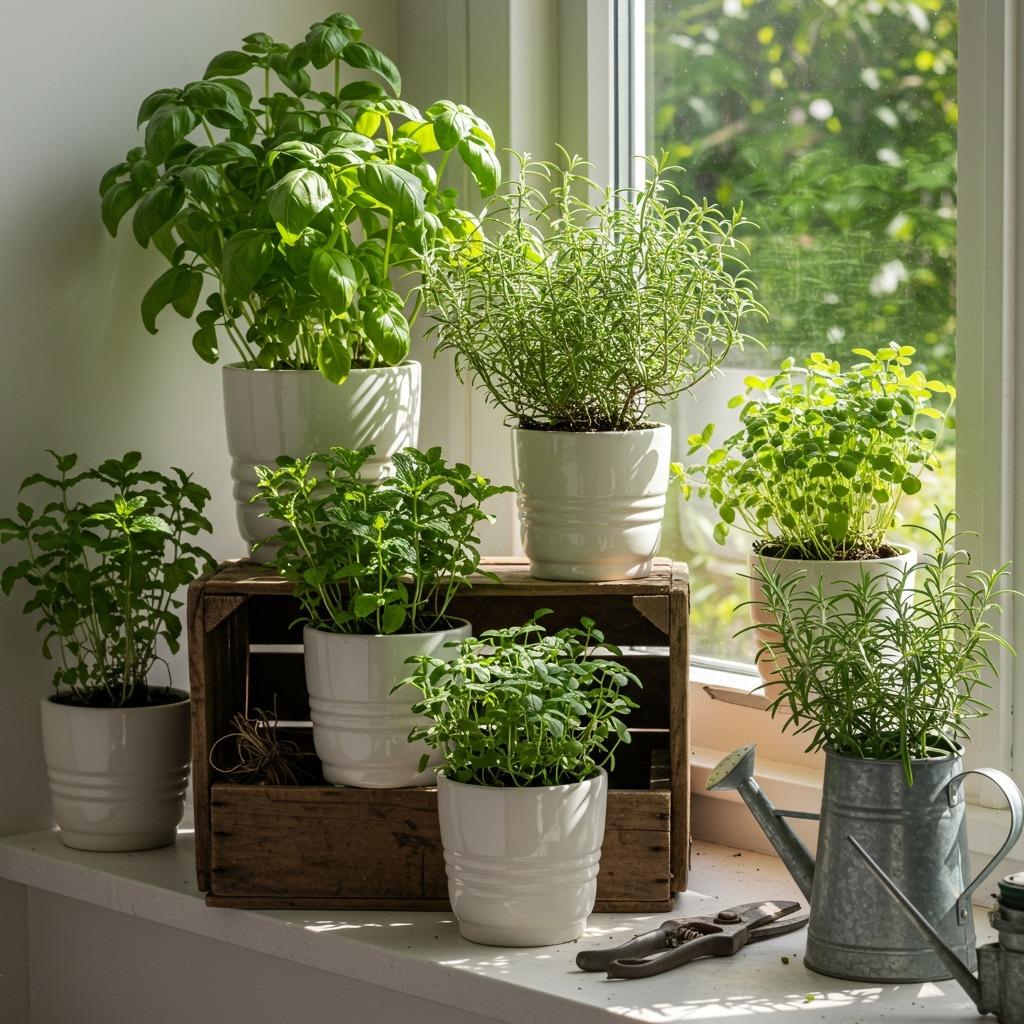
If you’ve got south or west-facing windows in your living room, why not use that prime real estate for herbs? A window sill herb garden brings functional beauty to your space. You get fresh herbs for cooking while enjoying the visual appeal of compact greenery right where you spend most of your time.
Choose herbs that match your cooking style and light conditions. Basil, mint, and cilantro love bright light and grow quickly. Rosemary and thyme are more drought-tolerant if you occasionally forget to water. The bonus? Many herbs naturally repel insects and fill your room with subtle, pleasant scents.
Use matching pots or a coordinated collection to keep the look cohesive. Ceramic containers in whites, terracottas, or muted greens work beautifully. Add small plant labels with handwritten names for a charming, cottage-garden feel. This setup works especially well if your living room connects to your kitchen – you’re literally steps away from fresh ingredients.
4. Statement Tree Centerpieces
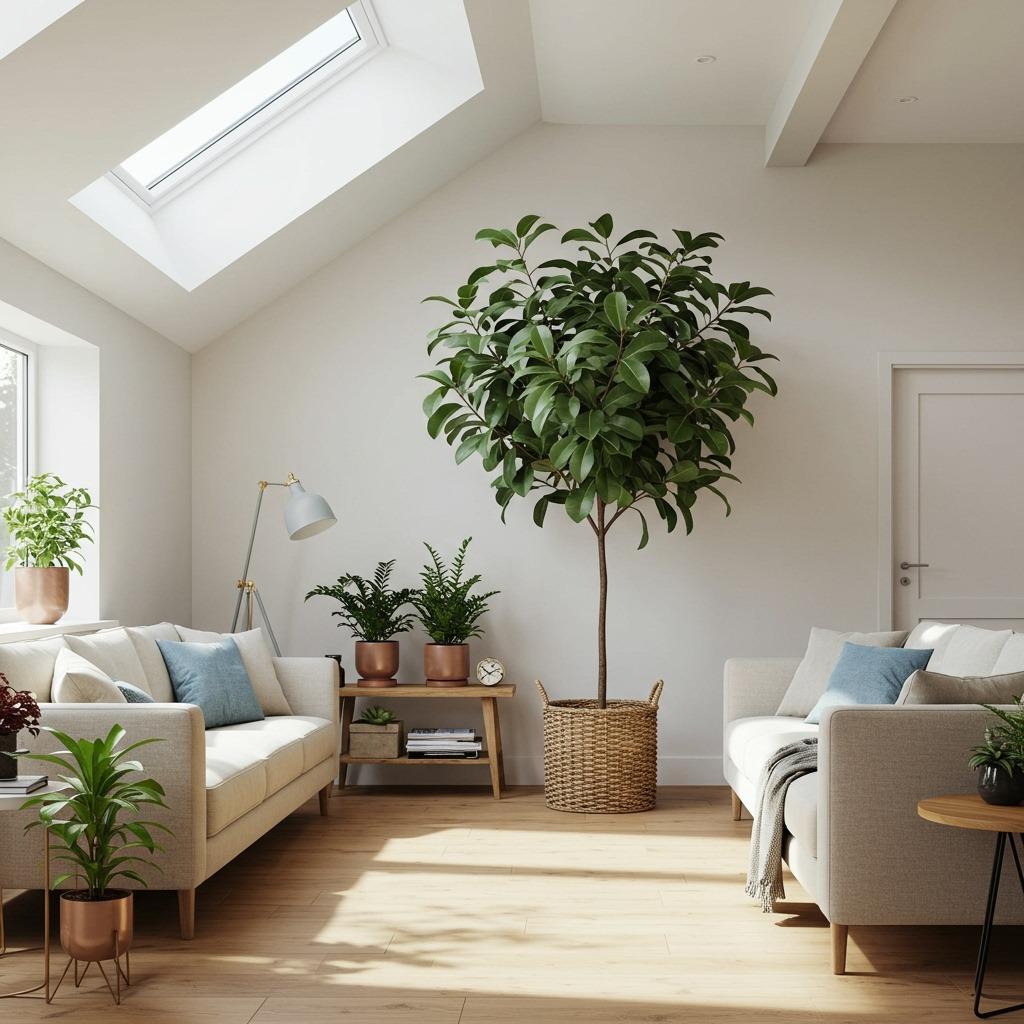
Sometimes one spectacular plant makes more impact than a dozen small ones. A statement tree becomes the room’s focal point, anchoring your entire home improvement design scheme. Think of it as living sculpture that happens to purify your air.
Rubber plants, weeping figs, and parlor palms work wonderfully as indoor trees. They can handle typical living room conditions and grow slowly enough that you won’t need to repot constantly. Position your tree where it becomes a natural divider or backdrop – maybe behind your sofa or in an open corner where it can spread gracefully.
The container matters as much as the tree itself. A large woven basket, ceramic planter, or even a vintage metal tub can become part of your decor story. Keep the base area clean with a simple saucer or tray. You want the tree to feel intentional and cared for, not like something you stuck in the corner and forgot about.
5. Floating Plant Shelves
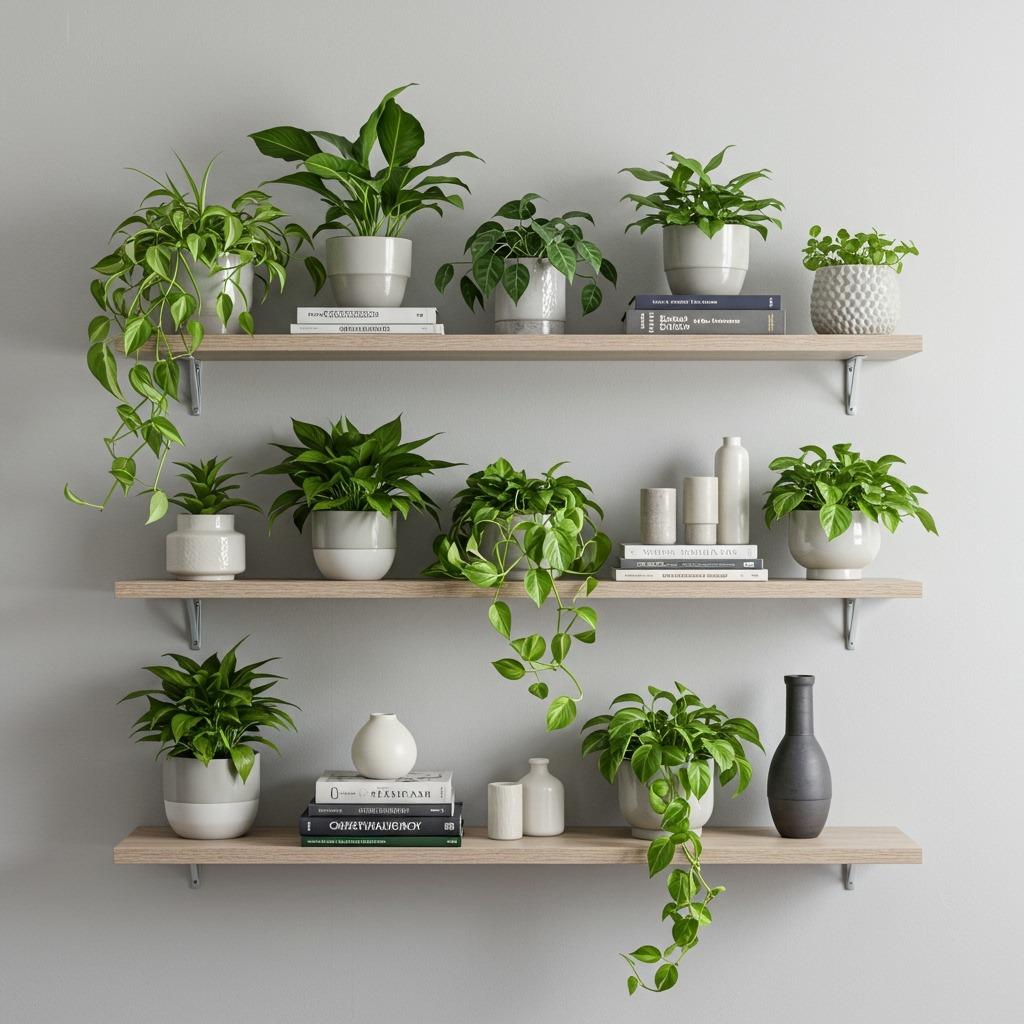
Floating shelves give you flexibility that floor plants can’t match. You control the exact height, spacing, and arrangement of your greenery. This works especially well in small space renovations where you need every inch to count.
Install shelves at varying heights rather than in perfect rows. This creates visual interest and lets you accommodate different plant sizes naturally. Place your most visually striking plants at eye level where they’ll get noticed. Use higher shelves for trailing plants and lower ones for upright growers.
Mix your plants with a few decorative objects. A small ceramic vase, a favorite book, or a simple candle breaks up the greenery and prevents that “plant store” look. The goal is creating a styled display that happens to feature plants, not a plant nursery that happens to be in your living room.
6. Terrarium Coffee Table Displays
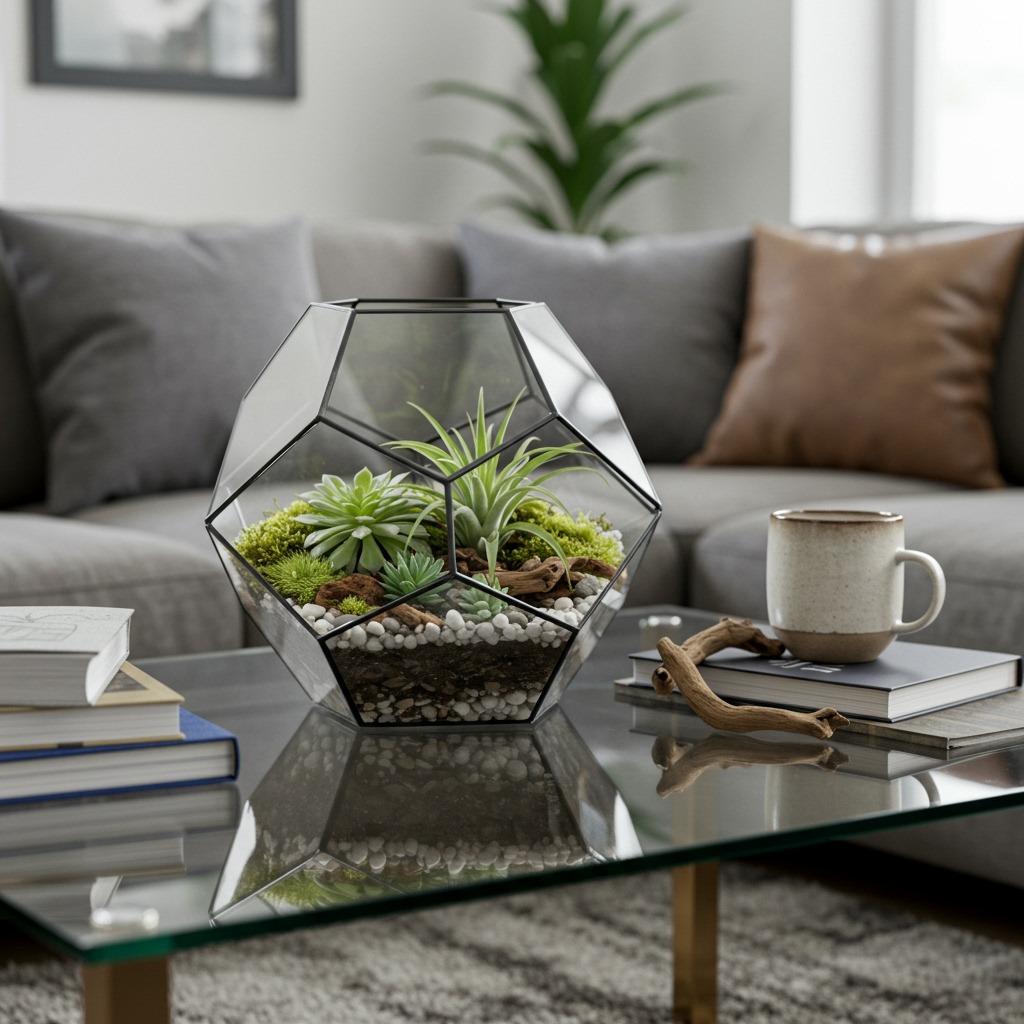
Terrariums bring the charm of a miniature ecosystem to your coffee table. They’re conversation starters that require minimal maintenance once established. The enclosed environment creates its own humidity cycle, meaning less frequent watering and more time enjoying your tiny garden.
Start with a glass container that fits your coffee table’s scale. Geometric terrariums look contemporary, while vintage apothecary jars lean more traditional. Layer your base with activated charcoal (prevents mold), then add soil appropriate for your chosen plants. Succulents and cacti need different soil than ferns or mosses.
Design your terrarium with visual interest in mind. Add small pieces of driftwood, interesting stones, or even tiny figurines for personality. Just don’t overcrowd it. The beauty of a terrarium comes from seeing the individual elements clearly, not cramming in every cute succulent you find. Water sparingly and place where it gets bright, indirect light.
7. Hanging Garden Canopy
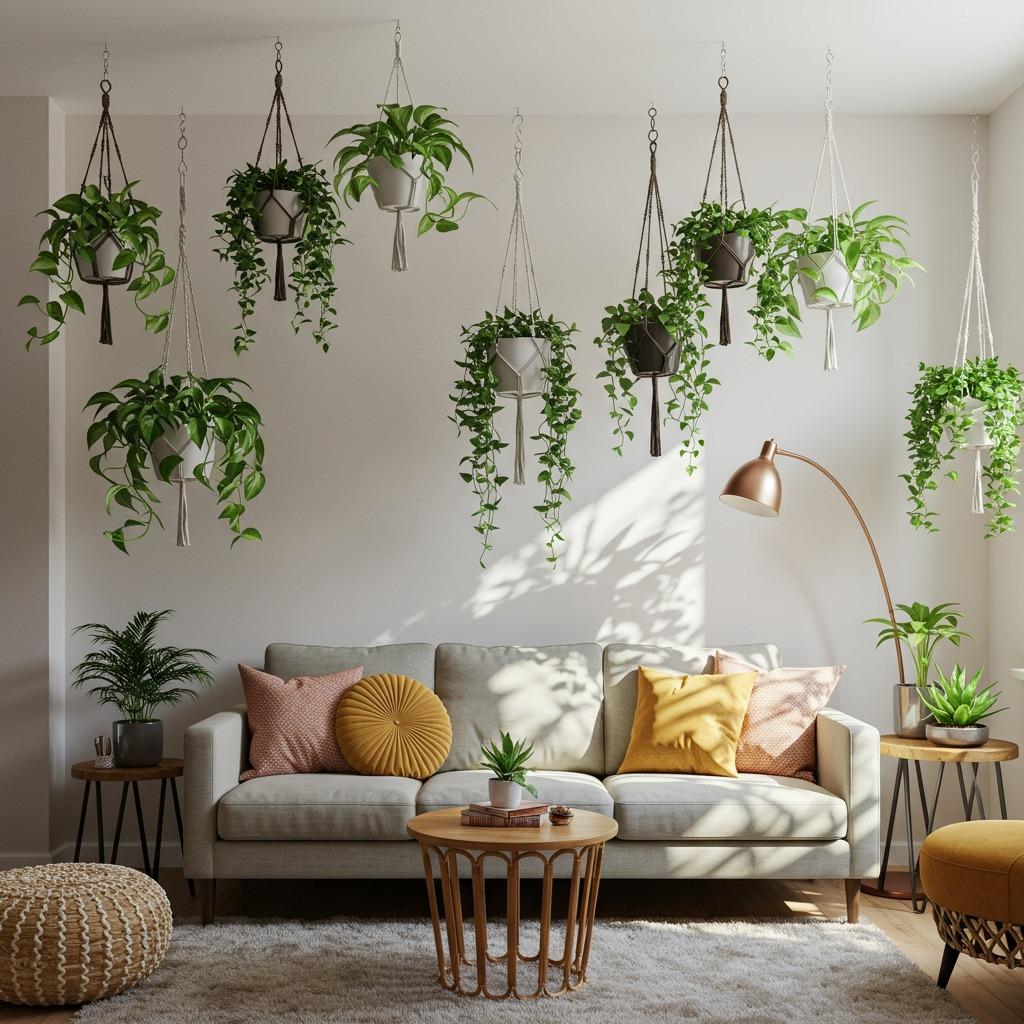
Hanging gardens utilize the often-ignored space above your furniture. When done right, they create an enchanting canopy effect that makes your room feel like an indoor forest clearing. This approach works particularly well in rooms with high ceilings where you want to bring the visual interest down to a more intimate level.
Choose a mix of trailing and upright hanging plants. String of hearts, boston ferns, and various pothos varieties create beautiful cascading effects. Spider plants work wonderfully because they’re nearly indestructible and produce baby plants that add to the cascading look over time.
Install ceiling hooks in a staggered pattern rather than a straight line. Vary the hanging heights so plants interact visually without actually tangling together. Consider the view from your seating area – you want to see the plants without feeling like you’re in a jungle maze. Use matching or coordinated hanging planters to maintain cohesion even with different plant types.
8. Plant Shelf Dividers
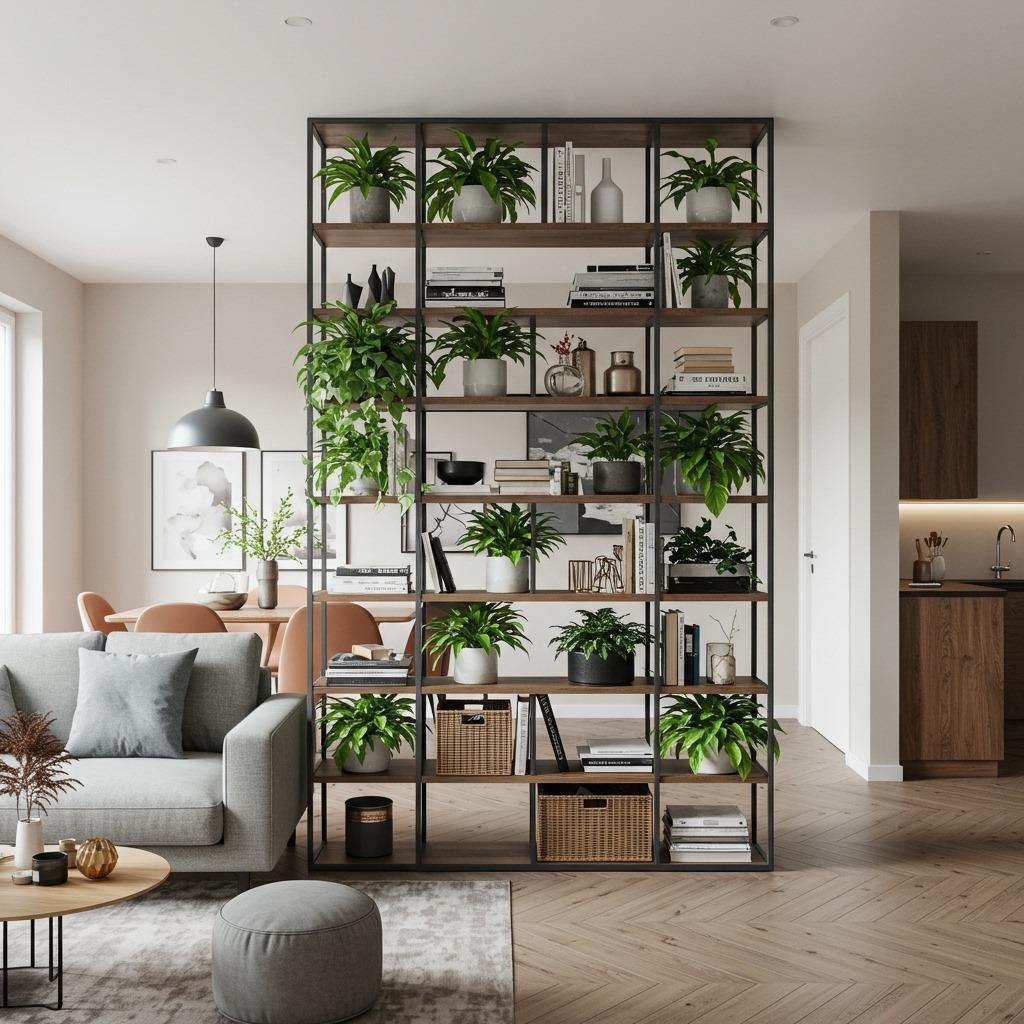
Room dividers don’t have to be solid walls. A strategically placed bookshelf or ladder shelf filled with plants can define spaces while maintaining an open, airy feel. This works beautifully in open-plan layouts where you want to create zones without closing off rooms.
Choose a shelf unit that’s tall enough to create visual separation but not so dense that it blocks light. Style it with plants on alternating shelves, mixing heights and textures. Add a few decorative objects or books to prevent it from looking too uniform. The goal is creating a living screen that’s interesting from both sides.
This approach shines in studio apartments or great rooms where you need to distinguish your living area from dining or work spaces. The plants soften the division while providing privacy. Plus, you’re adding significant greenery to your space without dedicating floor area to individual pots.
9. Air-Purifying Plant Collections
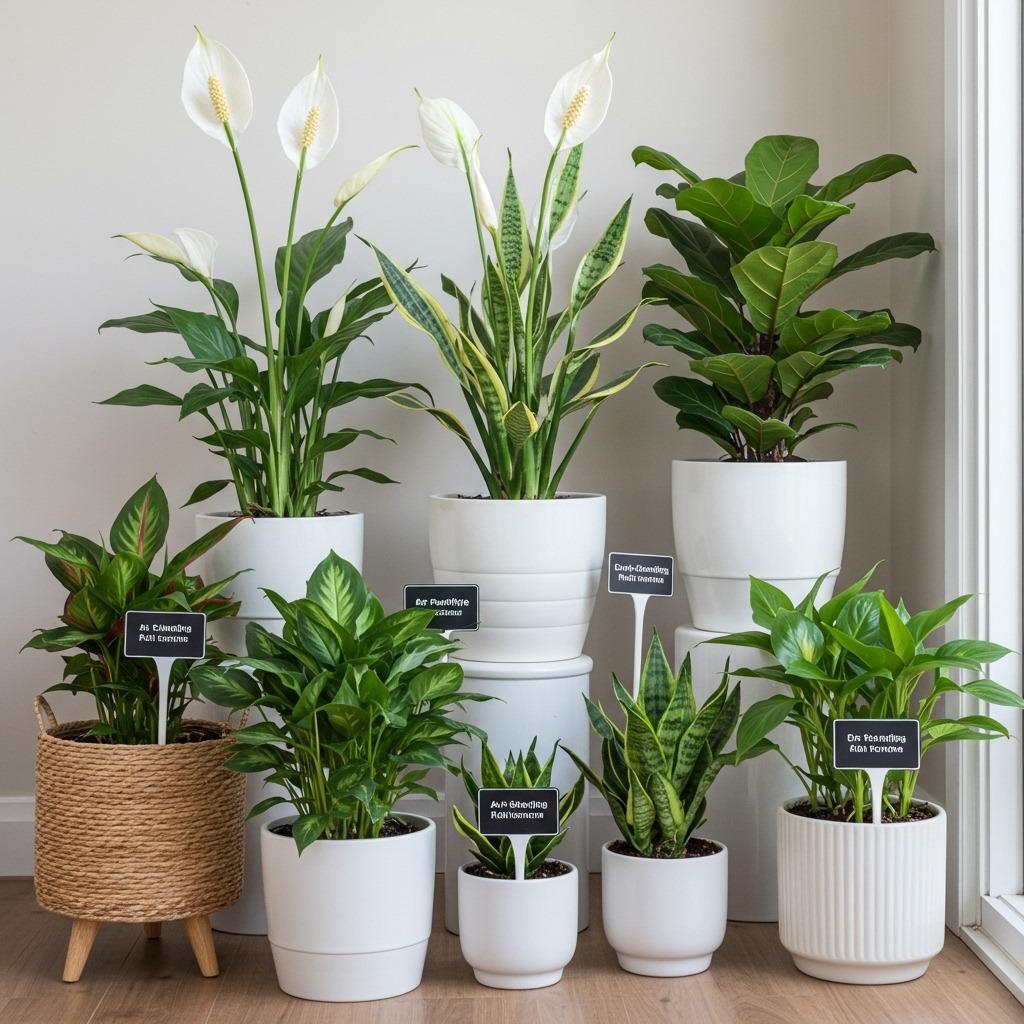
Not all plants are created equal when it comes to cleaning your indoor air. Some varieties excel at filtering toxins and producing oxygen, making them both beautiful and functional choices for your living room design. Building a collection around these workhorses means your indoor garden actively improves your space.
Peace lilies, snake plants, and spider plants top the list for air purification. They remove formaldehyde, benzene, and other common indoor pollutants. Pothos and dracaena varieties are also excellent choices. The best part? These plants tend to be beginner-friendly and forgiving of occasional neglect.
Group these plants together in a dedicated corner or spread them throughout the room for maximum air-cleaning effect. Use a variety of container styles to keep things visually interesting. Label each plant with a small tag noting its special properties – this becomes a talking point and reminds you why each one matters.
10. Seasonal Rotation Displays
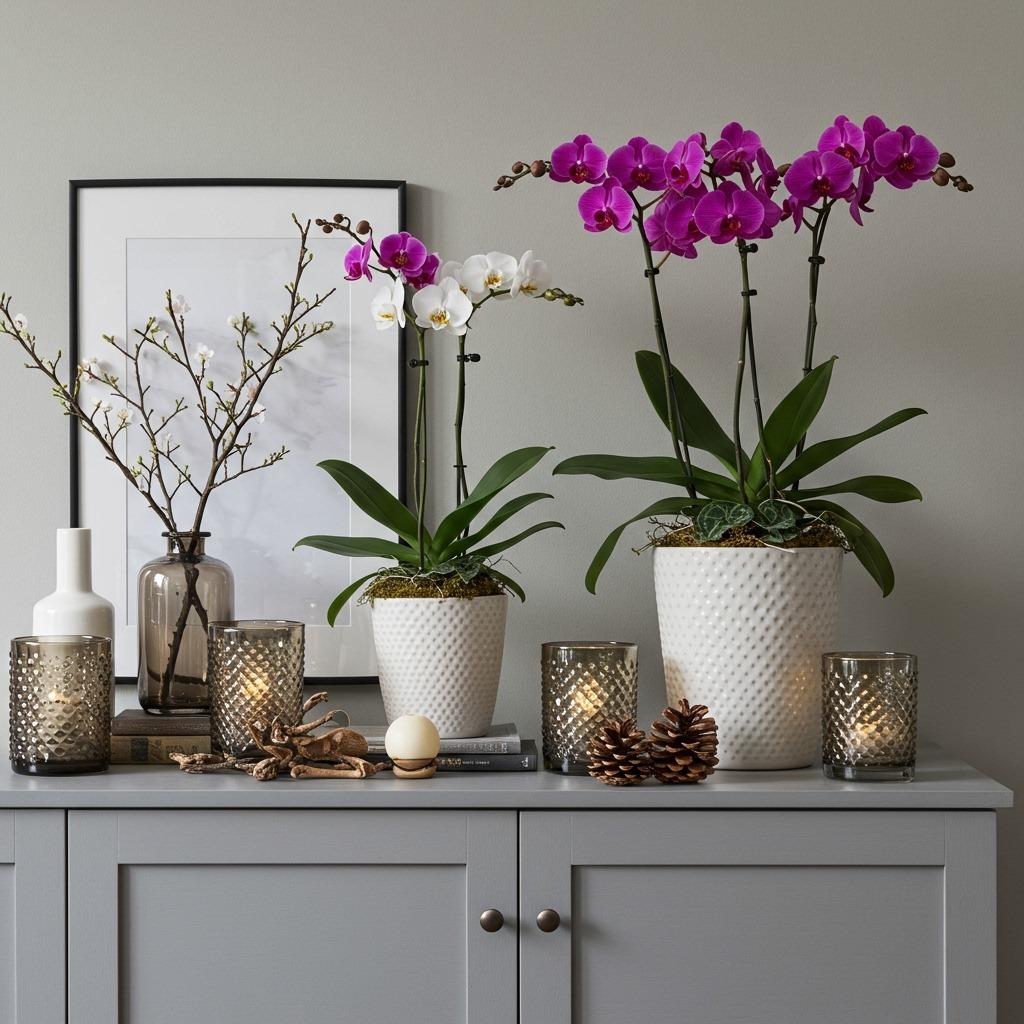
Your indoor garden doesn’t have to look the same year-round. Rotating seasonal blooming plants keeps your space feeling fresh and connected to the natural cycles outside. This approach works especially well if you love having flowers in your home but find cut arrangements too temporary.
Winter months are perfect for orchids, cyclamen, and Christmas cacti. Spring brings options like forced bulbs and azaleas. Summer and fall can feature hibiscus, jasmine, or kalanchoe. These plants provide bursts of color that complement your permanent green collection.
Create a designated spot for your seasonal display – maybe a sideboard, console table, or prominent shelf. Swap out the featured plants every few months while keeping your reliable foliage plants in their regular positions. This gives you the excitement of change without the commitment of completely redesigning your indoor garden setup.
11. Minimalist Single-Species Groups
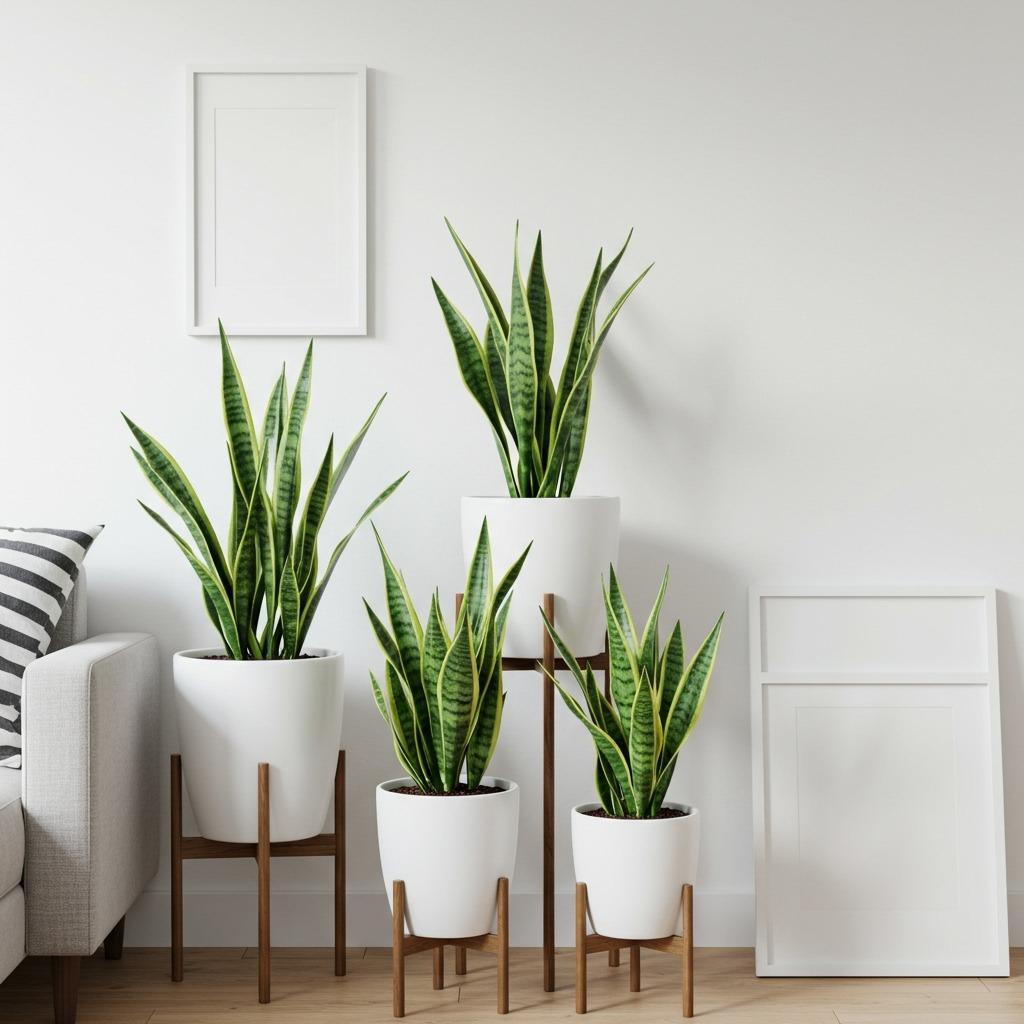
Sometimes less really is more. Instead of mixing dozens of plant varieties, choose one species you love and display it in different sizes and arrangements. This creates a sophisticated, gallery-like feel that works beautifully in contemporary spaces or minimalist designs.
Snake plants work wonderfully for this approach because they come in various sizes and patterns. Pothos in different maturity stages creates beautiful variation while maintaining visual unity. Fiddle leaf figs at different heights can create a striking, cohesive display.
Use matching containers to emphasize the repetition. White ceramics, black planters, or natural terracotta – pick one and stick with it. Arrange your plants at different heights using plant stands, shelves, or floor placements. The repetition creates rhythm while the height variation adds interest. This approach feels intentional and curated rather than collected randomly over time.
12. Window Bay Garden Seats
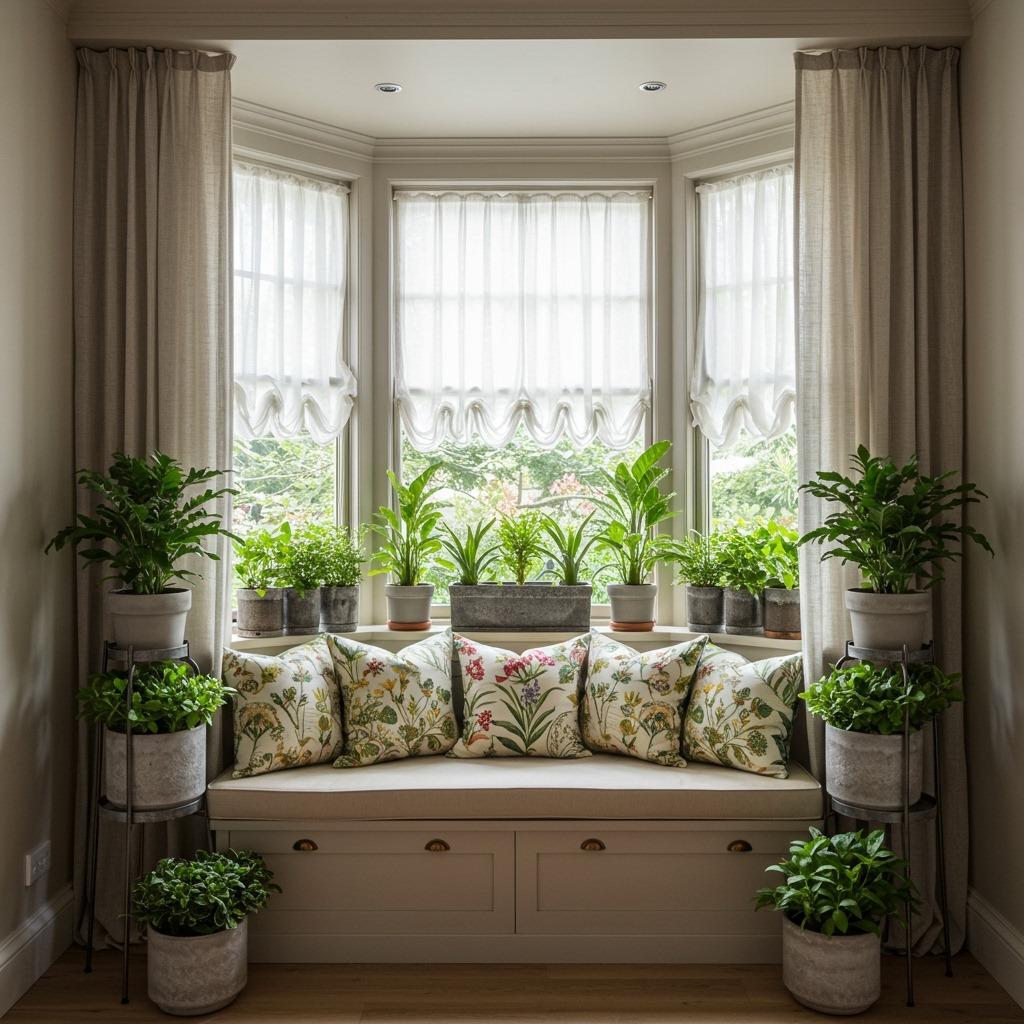
If you’re lucky enough to have a bay window, turn it into an indoor garden sanctuary. The natural light makes it perfect for plants, and the architectural feature creates a room-within-a-room feel. Add seating and you’ve got a reading nook that’s also a personal botanical garden.
Line the window area with plants that appreciate bright light. Herbs, citrus trees, or flowering plants thrive in these spots. Use tiered plant stands to create levels and ensure smaller plants don’t get shadowed by larger ones. Keep the windowsill itself relatively clear or use low-growing succulents that won’t block the view.
Add a cushioned bench or chair to make this a functional retreat. Choose fabrics with subtle botanical patterns or solid colors that complement your greenery. This becomes your morning coffee spot, afternoon reading corner, or evening wind-down zone – all surrounded by thriving plants that benefit from the same natural light you’re enjoying.
13. Low-Maintenance Desert Garden
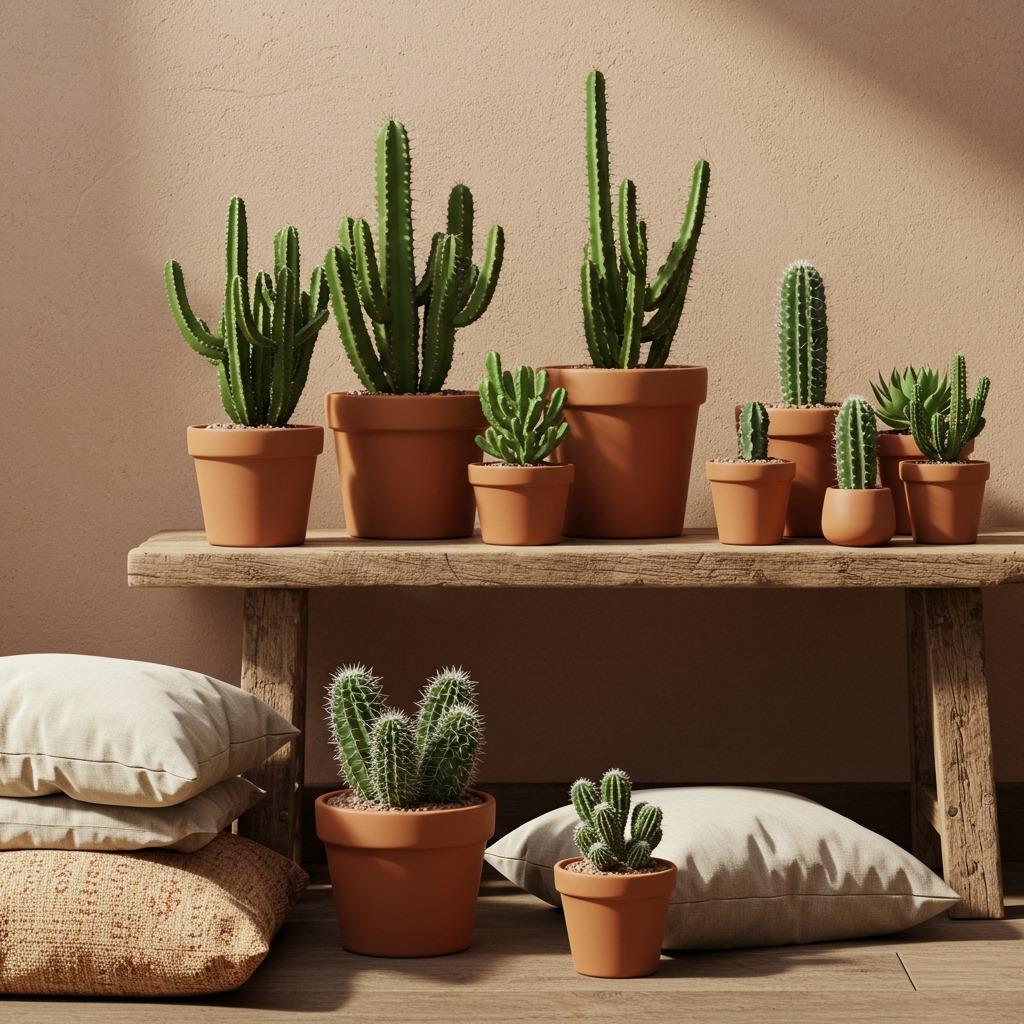
Not everyone can commit to high-maintenance plants, and that’s perfectly fine. A desert-themed indoor garden brings striking architectural beauty with minimal watering needs. Cacti and succulents offer incredible variety in shapes, colors, and textures while forgiving your busy schedule.
Group different cacti varieties together for visual impact. Mix tall columnar types with round barrel cacti and spreading paddle cacti. Add succulents like echeveria, jade plants, and aloe for softer textures. The variety prevents the display from looking monotonous while maintaining the low-water lifestyle.
Terra cotta pots are ideal for these plants because they’re porous and prevent overwatering. Arrange pots in groupings of odd numbers – three, five, or seven creates more natural-looking compositions. Place your desert garden near a sunny window and water sparingly. This setup works beautifully in bedroom designs or any space where you want greenery without the constant maintenance.
14. Boho Macrame Hanging Mix
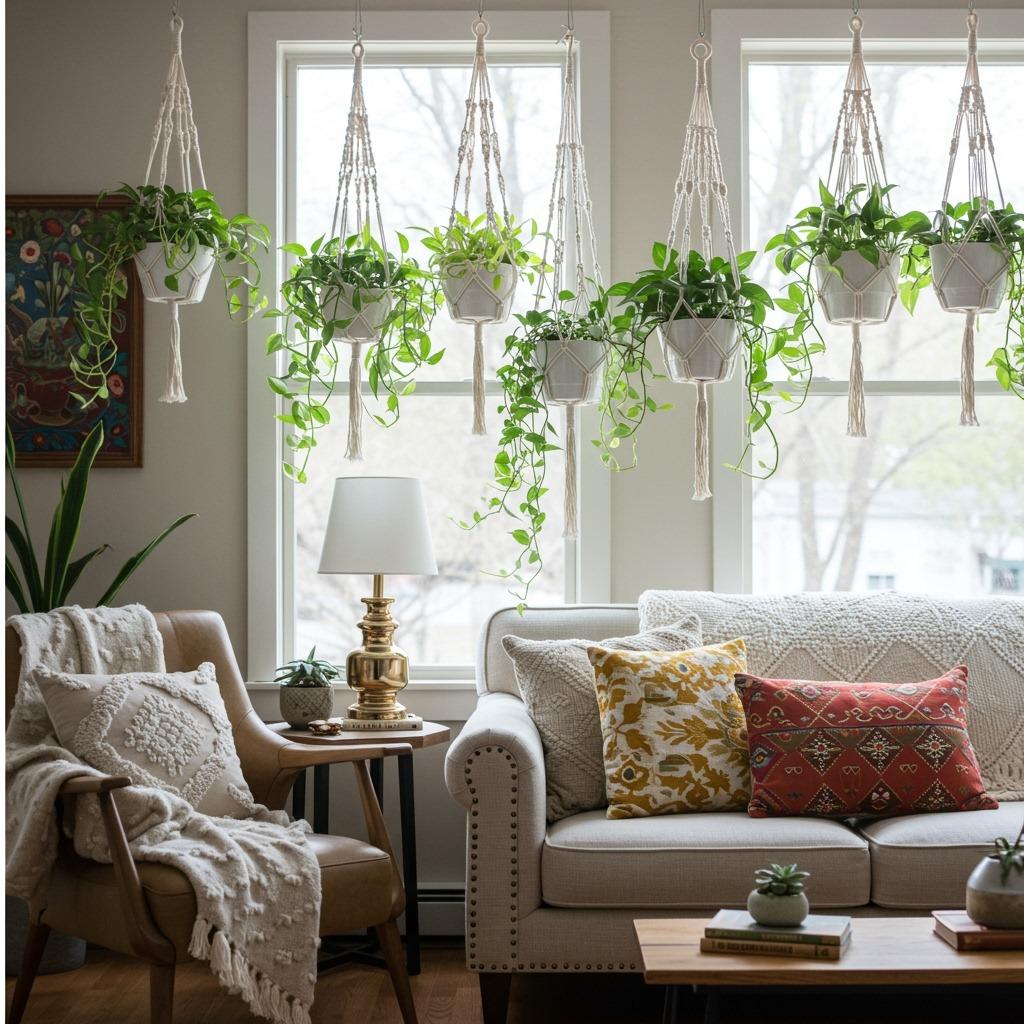
Macrame plant hangers instantly add texture and personality to your indoor garden. The handcrafted feel works beautifully in bohemian or eclectic spaces where you want that collected-over-time look. Plus, they come in countless patterns and lengths, letting you customize the exact aesthetic you’re after.
Mix different macrame styles rather than matching everything perfectly. A chunky jute hanger next to a delicate cotton one creates visual interest. Vary the lengths so plants hang at different levels, creating depth and preventing a uniform, too-planned appearance.
Choose trailing plants that show off the macrame work. Pothos, string of pearls, and philodendron varieties cascade beautifully through the hangers. The plants become part of the macrame art rather than just sitting in a suspended pot. Hang these near windows where they get good light and create beautiful shadows as the sun moves through the day.
15. Edible Indoor Garden
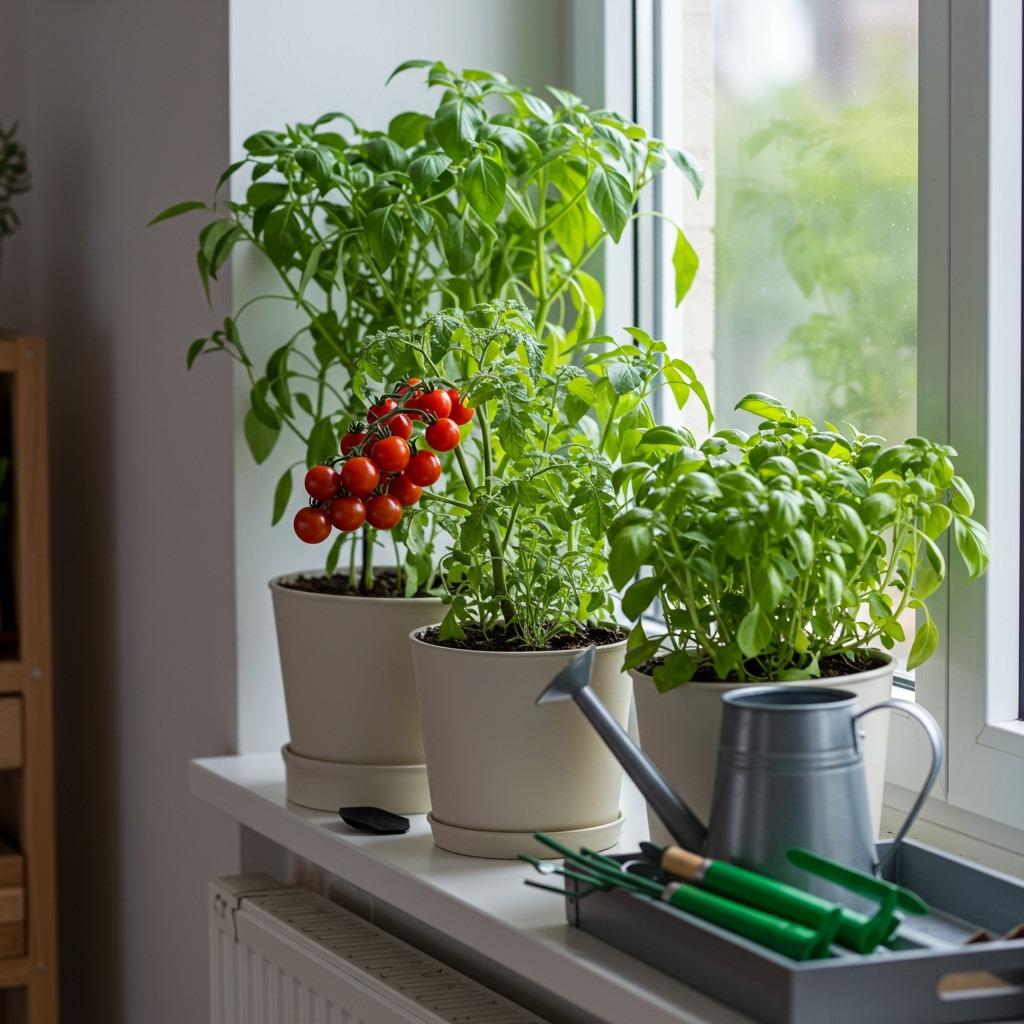
Who says indoor gardens are just for looks? Growing edibles in your living room combines beauty with function. Cherry tomatoes, peppers, and herbs not only look great but also provide fresh ingredients. There’s something deeply satisfying about harvesting dinner from your living room.
Start with compact vegetable varieties bred for container growing. Patio tomatoes, mini peppers, and dwarf citrus trees work surprisingly well indoors with enough light. Supplement with grow lights if your windows don’t provide 6-8 hours of direct sun. The initial investment pays off when you’re picking fresh produce year-round.
Style your edible garden like any ornamental display. Use attractive containers, add decorative trellises for climbing plants, and keep the area tidy with proper maintenance. This approach works especially well if your kitchen and dining area connects to your living room. You’re literally cultivating farm-to-table at its freshest.
Creating an indoor garden living room isn’t about following a rigid formula. It’s about understanding your space, your lifestyle, and which plants will thrive in your specific conditions. Start small if you’re new to plants – maybe one corner cluster or a few hanging plants. Pay attention to how they grow and what they need.
Your indoor garden should evolve naturally over time. Some plants will flourish beyond your expectations, others might struggle despite your best efforts. That’s normal. The goal is creating a living space that feels more connected to nature, improves your air quality, and brings you joy every time you walk through the door.
The most successful indoor gardens are those that fit seamlessly into daily life. They’re watered during morning coffee, admired during evening relaxation, and trimmed while catching up on shows. When your plants become part of your routine rather than another chore, you’ve created something sustainable and truly beautiful.

